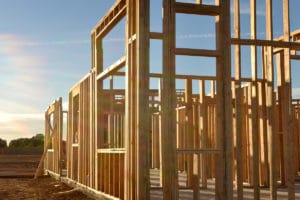We are a nation obsessed with looking for, hoping for and predicting The Bottom of this real-estate market. In our spare time, some may also root for — in both senses — bottoms in stocks, commodities and uncommon viruses.
Why do we peer down so hard? A bottom means things won’t get any worse. But how long the worst lasts is unknowable.
Many of us believe, even though we don’t say so, that once we’re on the bottom, things, eventually, will scoot up to where they were a couple of years ago. Or put simply: A house worth $250,000 will once again sell for $500,000 after 15 days on the market.
This is a ruinous hope. The only way to get back there quickly is to do it the way we got there in the first place. The factors that “steroided” property values after 2000 caused the tumble that we are now riding down.
The real-estate frolic was not, shall we say, sustainable, because it was the product of fraudulent appraisals, unscrupulous lenders, greed-driven speculators, individual home buyers who chose not to add or subtract, gamblers and crooks masquerading as risk managers, brokers and agents who made hay while the sun shone, commentators who blew hot air into the bubble, government regulators who did not regulate and politicians who did not want to rock a ship of self-interested fools. (If I missed somebody, it was not intentional.)
If the same players are allowed to start playing the game the old way, we will have wasted the billions in public bailouts and set ourselves up for an even bigger wreck.
We will know when real estate has bottomed in hindsight. No one can predict it in advance since many “other shoes” are out there that may or may not drop.
Recent surveys of Realtors by HomeGain and consumers by Zillow, as reported in Inman News (“Realtors optimistic about price bottom,” May 18, 2009) as well as a member survey from the National Home Builders Association (“Builder confidence continues to rise in May,” May 18, 2009) suggest a small increase in confidence in each of the three groups. Hope, of course, doesn’t hurt.
Confidence breeds confidence, which is the trampoline for any bounce. But expressing survey confidence in the future while the present is still in a slide can be rooted as much in desperation as in the first glimmers of a genuine turnaround.
All real estate is local. A bottom here may hit long before a bottom there. One can last six months, the other five years. The 50 percent asking-price reductions now seen in some parts of California, Nevada and Florida may still reflect inflated seller expectations, while 20 percent off in the northern Shenandoah Valley may be as low as it’s going to go.
When market indicators finally suggest that we had hit bottom a few months earlier, the blessed event will reflect national averages for existing home sales, new house starts, price, inventory and foreclosures. Those numbers will have national relevance, but their effect on individuals will vary. Some sellers will give up, either by bottoming their price or being foreclosed. Others will tough it out in expectation of the upturn.
The bell tolling the national bottom may be barely heard in local real-estate markets that don’t track the national average, particularly those that are smaller, less urban/suburban, more specialized and less punched up by subprime loans and foreclosures.
Rural property asking prices (and presumably values and selling prices), taken as a whole, have held up better than metropolitan residential values. But each seller, even in the strongest local market, has to be given a written offer to test his taste for a sale. Buyers don’t know what a seller will take unless they ask through an offer.
The individual seller is always the judge of his own bottom—and that’s the only one that counts for both buyer and seller. Assume that if a property is for sale in a market as weak as this, the seller wants to sell. Offers test how much a seller needs to sell.
My advice to sellers: Postpone selling if you can. Wait, if you’re able, until you see clear, modest upward trends. Then move…and don’t be greedy.
If you must sell right now, ask what you think your property is worth under a cold, hard light, but be prepared to move down as fast as you have to. Sell “as is.” Be transparent about your need to sell and don’t send mixed signals. You’ll find out the current market value of your property quickly.
My advice to buyers: Figure out what a particular property is worth to you right now given its assets and negatives, weighed against your financial resources and plans. Forget about timing the market and buying at the bottom. Come up with an offer that makes sense to you, regardless of asking price, comparables, appraisals, competitive market analyses and the opinion of your wife’s third cousin who operates a taxi in Manhattan and is widely reported to have once driven Suze Orman to a matinee.
Bottoming out will require adjusting the expectations of have-to-sell-now sellers in most real-estate markets. This will bring more pain. They will have to forget the selling prices of the recent past and lower their expectations of the anticipated appreciation rate that recovery will bring. Some comfort may be found in understanding that future appreciation rates will not be juiced-up once again by the financial lemons on which we have all soured.
A 3-to-5 percent annual gain works for all. Ten percent or more will ultimately penalize everyone again.
It’s the bottoming of expectations — seller by seller, market by market — that will bring us up and out.
This content may not be used or reproduced in any manner whatsoever, in part or in whole, without written permission of LANDTHINK. Use of this content without permission is a violation of federal copyright law. The articles, posts, comments, opinions and information provided by LANDTHINK are for informational and research purposes only and DOES NOT substitute or coincide with the advice of an attorney, accountant, real estate broker or any other licensed real estate professional. LANDTHINK strongly advises visitors and readers to seek their own professional guidance and advice related to buying, investing in or selling real estate.









Wow, this is a great piece. Would you agree that, from an acquisition standpoint, it’s more important to buy in the trough rather than try to “catch daggers” and time the bottom exactly?
Great Article….
Buyers — now is the time and don’t worry about it getting lower. Buy and move forward to your next steps.
Sellers — I can’t agree more. The prices will not come back to 2005 and 2006 in six months or a year. Unless, of course, all that inventory is sold immediately.
Let’s all be realistic and please be honest with people. The truth may hurt, yet it will make us stronger as the market continues to go up and down.
Thanks for the interesting perspective from the writer.